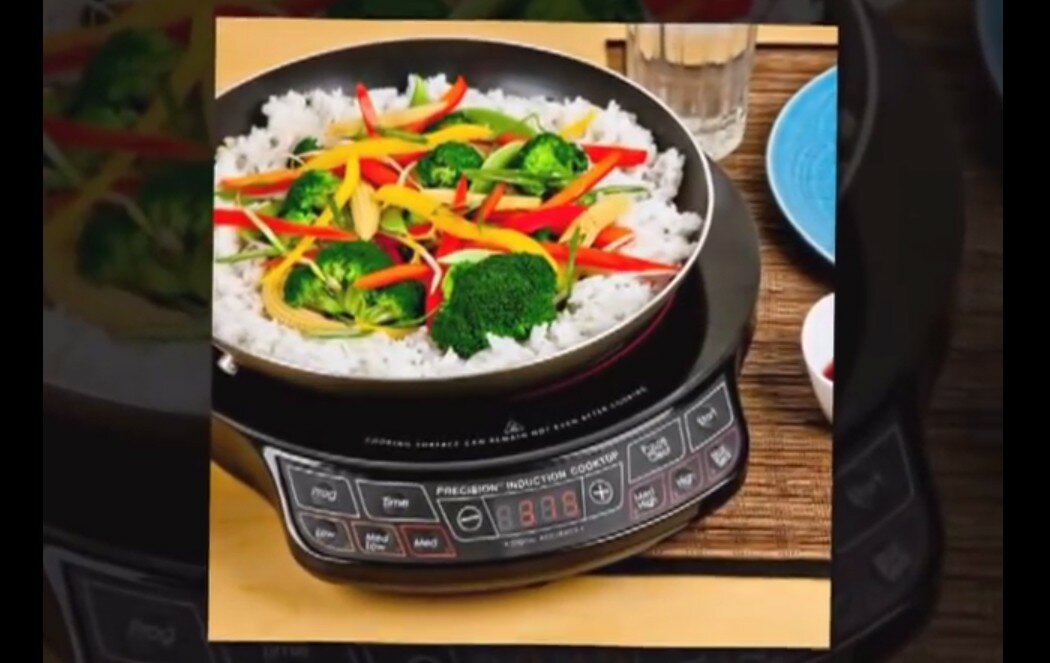List of Pros and Cons of Induction Cooktop
In ways, they seem like a true space-age technology—no flame, no hot coil, just a glass sheet, with a circle marked on top and a glowing light. Induction cooktops are a distinctive and unique cooking apparatus that heat up the pan, not the burner, through the application of electromagnetic fields. While they are used for many of the same cooking tasks as other cooktops, they have particular advantages and disadvantages that make them particularly suited to certain applications.
When you pass an electrical current through metal, the resistance causes the metal to heat up. A traditional electric stovetop is that simple: the heating element is a coil, and as the energy increases, the resistance makes the coil hot. An induction stove is a little more complicated. Using an electromagnet that generates a special kind of field, induction cooktops make this process happen in the pot or pan itself. Instead of heating an element and using that to heat your cookwear, induction cooking uses the cookwear itself as a heating element.
List of Pros of Induction Cooktop
1. Heats Up Quickly
This gives an induction cooktop some distinct advantages over other cooking surfaces. Since the heat doesn’t have to be transferred from the element to the cooking vessel, induction cooktops heat up very quickly, and since there’s no dense coil to hold heat they cool down faster than traditional electric as well. This gives a cook more control over the temperature of their cooking. Higher-end induction cooktops can monitor the power drawn by the pan and precisely control the temperature.
2. More Efficient
There are other advantages to using the pan as the primary heating element. Electric burners are a comparatively inefficient way to transfer energy to a pan, heating up far hotter than the intended cooking temperature. The orange glow of a coil stove is itself energy in the form of light, radiating out in visible and invisible wavelengths on all exposed surfaces of the burner. Burning gas likewise wastes enormous energy, with the gasses transferring limited heat to the pan as they flow around it and warm the room.
3. Safer to Use
Efficiency means that inductions cooktops don’t need to get as hot as other types of stoves in order to heat the food to the same temperature. In fact, with induction cooking the hottest piece of the entire process is the part in direct contact with your food. This gives it some obvious advantages in safety, since cooler temperatures cause fewer burns and start fewer fires. That’s no reason to be careless, of course—induction stoves still get extremely hot, and may not show it as visibly as other cooking methods.
4. Great for Populated Areas
In crowded cities like Tokyo and Hong Kong, induction cooktops are ubiquitous, since they require less space to be used safely and are less likely to start a fire. Many college students favor induction cooktops for similar reasons. In addition, the electrical components are not at risk of higher temperatures, and does not need to be as deep to dissipate heat. This makes induction the thinnest cooking surface by depth, making it even more appealing to limited spaces. This thin profile also allows it to be set up for use from a wheelchair.
5. Less Food Burned
Since they don’t get as hot, induction surfaces don’t have all the problems associated with higher-heat devices. Food never gets burned onto the surface, since without the metal there is no induction. The simple flat surface is much easier to clean than other ranges, and there are no gaps or cracks to build up grease or crumbs.
List of Cons of Induction Cooktop
1. Limited
Induction uses the pan as a heating element, and some cooking vessels are more suited to this than others. To be used for induction cooking, a pot or pan must be made of a ferromagnetic material in order to respond to the fields. Copper, glass and aluminum vessels cannot be used directly on the cooktop, and require a ferrous intermediary (a hot disk) to cook with. Similarly, pots and pans need to have a flat bottom to rest in contact with the surface—round-bottom woks require specially designed tops, and can’t be used on standard induction cooking setups.
2. Fluctuate Temperature of Cooking
Since they heats the metal of the vessel, the vessel needs to be a good heating element– If steel cookwear is too thin, it can fluctuate rapidly in temperature or be difficult to control. If it’s large, it may take large amounts of energy to become hot enough to cook.
3. Can Scratch Surfaces
The glass-ceramic cooking surface has a lot of advantages over other stove tops, but it has its own problems as well. While it’s hard to burn food onto the glass, unlike onto the burners of other electric stoves, the glass can be scratched by sliding heavy pans or even cracked with an impact of enough force. They are in this way somewhat more fragile and vulnerable than either gas or electric.
4. Foil Can be Hazardous
Induction cooktops have a special weakness to aluminum foil. If it gets directly onto the cooking surface, it can melt in, reacting with the magnetic fields at every use and embedding itself into the glass. This can crack the surface and cause other permanent damage to the cooktop.
Cooking with an induction cooktop is its own unique experience. While it shares many similarities with other methodologies, an induction cooktop is a distinctive tool with real differences from every other cooking technology. Learning and understand these differences gives a better understanding of what cooktop will work best for your situation and needs.

